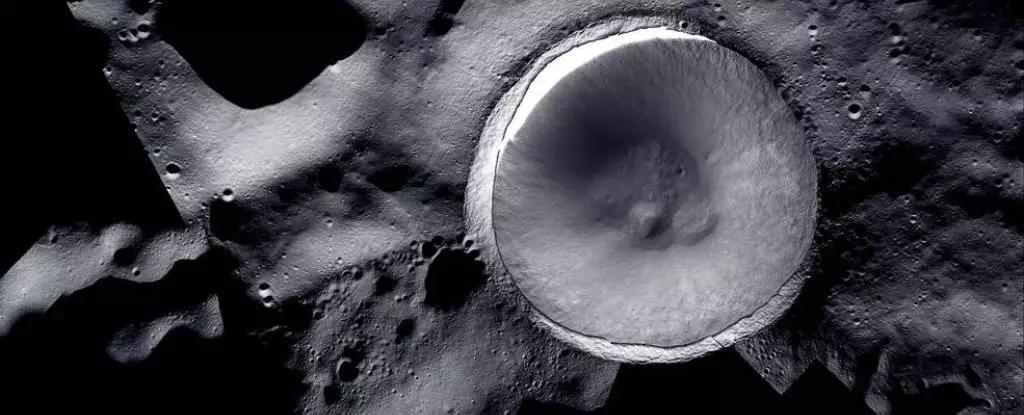NASA has recently unveiled a remarkable image of Shackleton Crater, a crater on the Moon that has remained hidden in darkness for billions of years. Located in the mountainous lunar south pole, this ancient pockmark hosts an intriguing mystery that scientists are eager to unravel. Due to the tilt of the Moon, only the highest ridges and peaks in this region are bathed in sunlight, casting the rest into shadows. These shadowed areas, known as ‘cold traps,’ are potential hiding spots for water or ice, which capture the curiosity of astronomers and researchers alike.
Shackleton Crater may hold vital clues about the existence of water on the Moon. With its extremely cold temperatures that drop as low as -173 °C (-280 °F), this dark region offers ideal conditions for preserving water in the form of ice. If water vapor from an ancient comet crash exists in the area, it is likely frozen, possibly hidden beneath the surface. As experts seek to explore this uncharted territory, their hopes are high for discovering evidence of lunar water-ice.
In 2026, astronomers in China aim to send a mini flying probe to Shackleton Crater with the objective of drilling for evidence of water-ice. This ambitious plan promises to shed light on the mysteries that lie hidden in the depths of this lunar crater. If successful, it could provide invaluable knowledge about not only the Moon but also the broader field of space exploration.
While awaiting China’s mission, NASA is turning to innovative technology to peer into the perpetual darkness of Shackleton Crater. The space agency has deployed a specially designed device called ShadowCam, which is over 200 times more sensitive to light in shadowed regions compared to traditional lunar cameras. Instead of relying solely on sunlight, ShadowCam leverages “earthshine,” a reflection of light from our planet that illuminates the Moon. Moreover, it captures the reflection of sunlight from mountains and ridges on the Moon itself. However, this design has a limitation – over-saturation when imaging bright regions.
Earlier this year, NASA attempted to capture Shackleton Crater using ShadowCam. However, the sunlit parts of the crater were overexposed and whited out. In response to this challenge, the ShadowCam team devised a solution: creating an image mosaic. By replacing the oversaturated, sunlit regions from ShadowCam with photographs from other lunar cameras, a comprehensive visual map of the terrain and geologic features of both the brightest and darkest parts of the Moon can be created. This groundbreaking technique allows scientists to capture the scene in breathtaking detail like never before.
The collaboration and synergy between different lunar cameras provide researchers with an opportunity to delve deeper into the unknown. With each camera optimized for specific lighting conditions found near the lunar poles, analysts can uncover a treasure trove of knowledge about the Moon’s darkest corners. The unprecedented view of Shackleton Crater offers a tantalizing glimpse into a world that has remained untouched for billions of years, holding secrets that could revolutionize our understanding of the Moon and its potential for future exploration.
Shackleton Crater, nestled in the depths of the lunar south pole, offers a canvas for scientific discovery. Through a combination of innovative technology, international collaboration, and unwavering curiosity, astronomers and researchers are inching closer to unraveling the enigma of this ancient pockmark. Each new image and discovery brings us closer to unveiling the secrets of the Moon and expanding our horizons in the realm of space exploration.


Leave a Reply